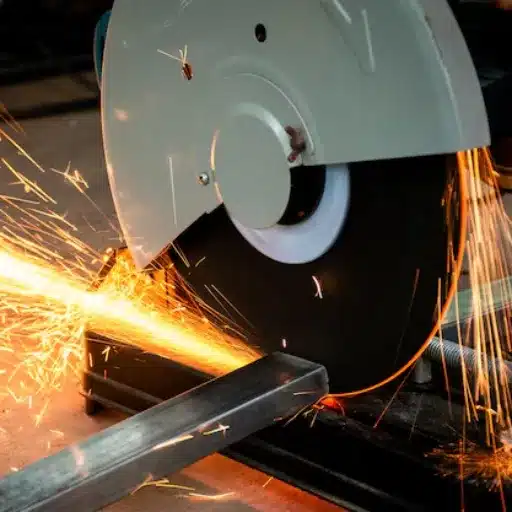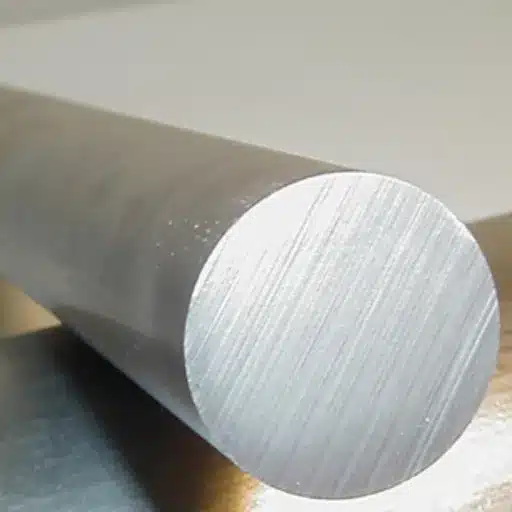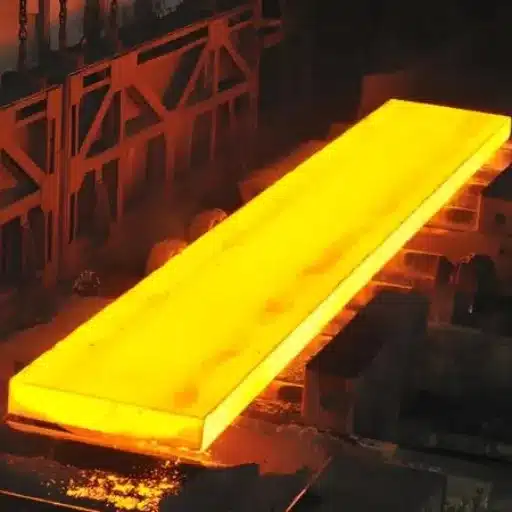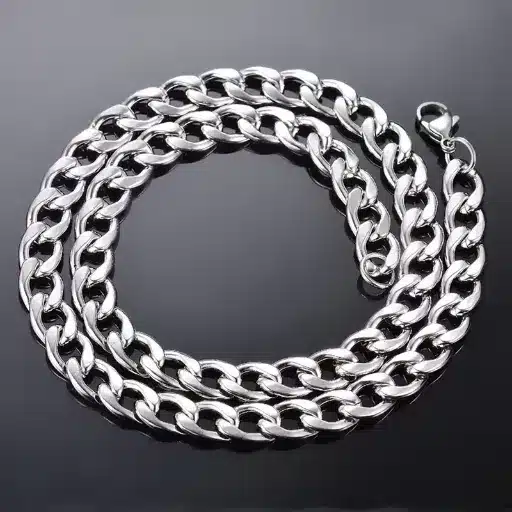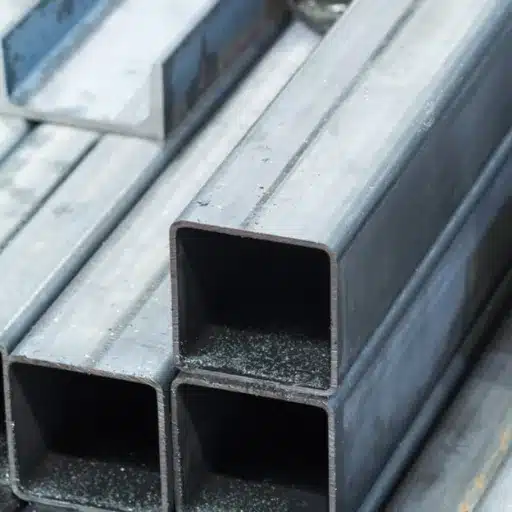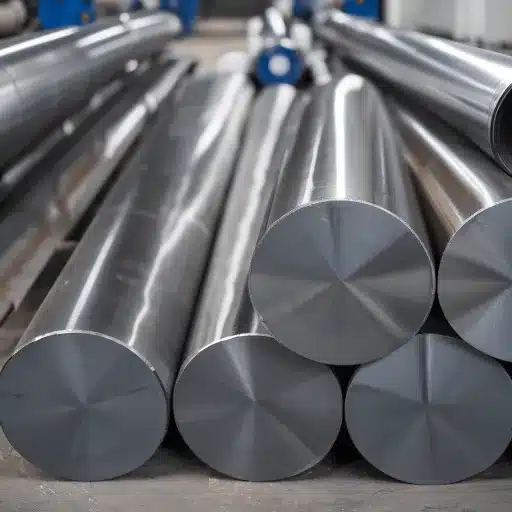Acknowledged as one of the extensively utilized carbon steel materials globally, Q235 steel captures considerable attention because of its supremacy in economical cost and versatility. This article intends to examine the physical and chemical characteristics of Q235 steel and its usage in different industry sectors, as well as the evaluation of Q235 steel with comparative grades of carbon steel. Completing this blog will give readers credible information on the multifaceted advantage of employing Q235 steel for construction, manufacturing, and engineering projects. This document is intended for industry professionals and the general audience interested in learning Q235 steel materials.
What is Q235 Steel, and How is it Classified?
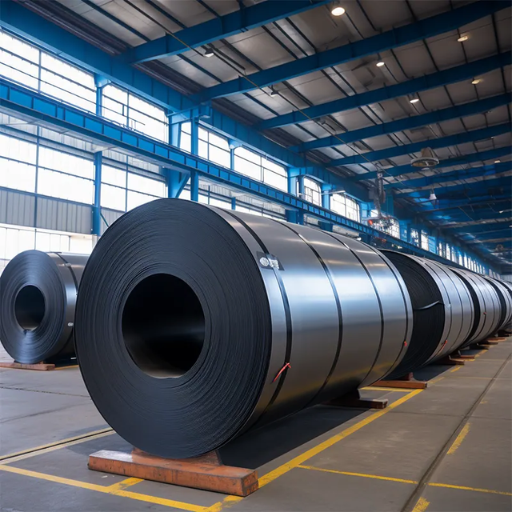
Q235 steel is a general-purpose carbon structural steel utilized in most construction and engineering works. A good amount of strength, ductility, and cost efficiency make it an ideal material to use. It is controlled under China’s GB/T 700 standard and consists of up to 0.22 percent of carbon, along with trace amounts of silicon, manganese, sulfur, and phosphorus. The Q235 steel is divided into four classes: A, B, C, and D, regarding its composition and physical characteristics, where D is the highest grade and A is the lowest grade. Such classification makes it suitable for constructing buildings, bridges, equipment, etc.
Understanding Q235 Carbon Structural Steel
A construction and engineering-friendly material is the easily manageable carbon structural steel known as Q235, documented within China’s GB/T 700 standard. Such designation works excellent for the steel’s efficient combination of economical carbon (up to 0.22%), silicon, manganese, and trace amounts of sulfur and phosphorus. The material is progressively graded where A has the lowest quality, B and C in the middle, and D at the highest, making it optimal for construction ranging from buildings and bridges to machinery.
Q235 Steel Grades: Q235A, Q235B, Q235C, and Q235D
Each grade of Q235 steel has different traits and is helpful in a variety of applications depending on its unique characteristics and technical specifications:
- Q235A: This grade has the most basic mechanical characteristics and is employed in general structural applications. This grade has lower impact resistance at low temperatures, making it best suited for applications where impact resistance is not essential.
- Q235B: This grade is considered an improved version of Q235A as it is of higher quality and greater uniformity. It is widely used for construction and manufacturing work due to its improved mechanical properties, like higher strength and weldability.
- Q235C: This grade guarantees better performance under low-temperature conditions. It is best suited to operate in frigid climates where impact resistance at low temperatures is essential.
- Q235D: This grade performs superiorly to all other Q235 grades, particularly in low-temperature environments, making it best for critical structural applications. It has the most stringent requirements for both chemical composition and mechanical properties.
Technical Notes
Here are the Q235 steel standard parameters, which may differ slightly by country and producer*:
- Max Carbon Percentage: 0.22%
- Max Silicon (Si): 0.35%
- Max Manganese (Mn): 1.40%
- Max Sulfur (S): 0.045%
- Max Phosphorus (P): 0.045%
- Tensile Strength:
- Q235A/B/C/D: 370-500 MPa
- Yield Strength, depending on thickness:
- Less than 16mm: 235 MPa minimum
- 16mm to 40mm: 225 MPa minimum
- 40mm to 60mm: 215 MPa minimum
- 60mm to 100mm: 205 MPa minimum
- Elongation:
- 26% (for each 2mm to 16mm thickness, gauge length = 5.65 √S0, [where S0 is the steel test piece])check the country standards
This will assist the users in determining the appropriate grade required for engineering or structural design purposes.
According to China’s National Standard: Q235 Steel Definition
Q235 steel is a carbon structural steel with a blend of chemical and mechanical properties that meets the National Standard of China. It possesses good weldability, plasticity, and toughness, Thus helping it meet the greater engineering construction purpose. As discussed above, the steel’s versatile applications and reliability adequately meet these customers’ requirements.
What Are the Chemical Composition and Mechanical Properties of Q235 Steel?
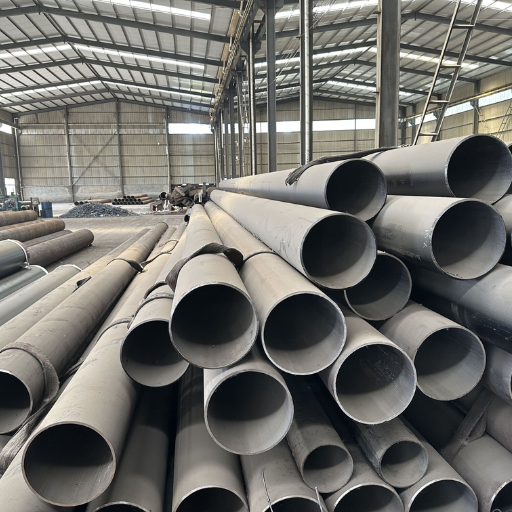
Q235 steel is mainly iron-based, with no more than 0.22% carbon percentage. Its chemical makeup contains the following elements within the given limits:
- Carbon (C): ≤ 0.22%
- Silicon (Si): ≤ 0.35%
- Manganese (Mn): ≤ 1.4%
- Sulfur (S): ≤ 0.045%
- Phosphorus (P): ≤ 0.045%
This balanced composition ensures desirable material characteristics such as strength and weldability.
Mechanical Properties of Q235 Steel.
The mechanical properties of Q235 steel comprise superior plasticity, decent toughness, and average strength, which qualifies it for varied structural functions. The most relevant mechanical properties are:
- Tensile strength (σb): 375-500MPa
- Yield strength (σs): 235MPa (minimum, for thickness ≤16mm)
- Elongation after fracture (δ5): 26% (minimum, for thickness ≤ 2.5mm)
- Hardness (HB): ≤160 (for annealed steel)
Due to these qualities, Q235 steel has become versatile and reliable for various engineering and construction works, such as bridges, buildings, and machinery. It is strong yet ductile, facilitating processing and allowing for numerous applications.
Chemical Composition of Q235 Steel
The balance of ductility and strength of Q235 steel is ensured by its chemical composition. The proportions of elements that it contains include carbon (C) at 0.12 – 0.20%, silicon (Si) at less than or equal to 0.30%, Manganese (Mn) at 0.30-0.70%, Phosphorus (P) at less than or equal to 0.045%, and sulfur (S) at less than or equal to 0.045%. Together, These elements provide the required mechanical properties and can still be welded and machined easily. This makes Q235 steel ideal for structural applications where reliability and performance matter.
Yield Strength of 235 MPa and Tensile Strength
Q235 steel’s yield strength is 235 MPa, which indicates the stress at which the material undergoes the onset of plastic deformation. Its tensile strength varies between 370 and 500 MPa and is influenced by the specific manufacturing process and the quality of the steel. These characteristics make this particular grade of steel appropriate for structural use since it offers a reasonable combination of strength and flexibility.
Physical Properties and Material’s Mechanical Properties
The explanation above confirms that Q235 steel is indeed suited for structural works due to its favorable mechanical properties. In addition, its yield strength of 235 MPa combined with tensile strength within the 370-500MP range provides a functional balance in stiffness and elasticity. Moreover, its chemical composition makes it easy to weld and form, which is important in construction and engineering works. The combination of these physical and mechanical properties proves that Q235 steel is a cost-effective and reliable material in the industry.
What Applications and Industries Use Q235 Steel?
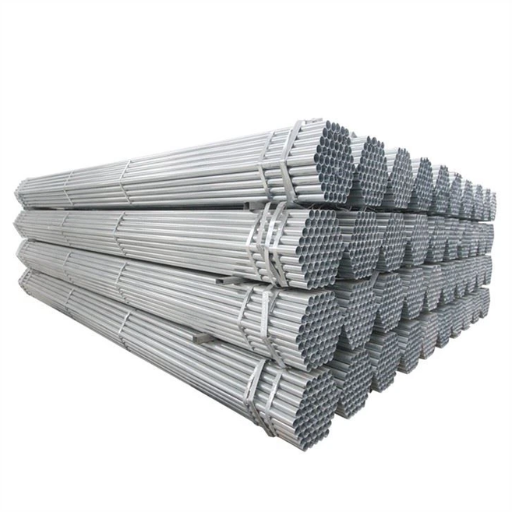
Due to its flexibility, Q235 steel is utilized in several industries. It is often used to construct structural frameworks, bridges, and buildings. The manufacturing industries employ Q235 steel for machinery components, pipelines, and tanks. Moreover, it is extensively used in shipbuilding and the automotive industry for parts requiring moderate strength for good weldability. As with many engineering materials, Q235 steel is economical and versatile, which makes its use commonplace across many industries.
Commonly Used Applications of Q235
Per my insight, Q235 is often used in the construction of structural frameworks, bridges, and buildings because of its relatively good strength and flexibility. Various industries depend on it for machinery components, pipelines, and even storage tanks. And for parts that need to be welded and that need to be built using affordable and moderately strong materials, it is dependable in the shipbuilding and automation industries.
Various Industries Where Q235 Steel is Widely Used
Q235 steel is used in many industries because of its valuable properties and low price. Here are the most critical sectors and their functions:
- Construction Industry
- Utilized in structural beams, columns, and frameworks of buildings and bridges.
- Technical Parameters:
- Yield Strength: ≥235 MPa
- Tensile Strength: 370-500 MPa
- Machinery Manufacturing
- Applicable to machinery parts like frames, supports, and tools.
- Pipeline and Storage Industry
- Widely used in pipelines for transmission of water, gas, and oil.
- Used in the manufacturing of storage tanks intended for liquids.
- Automotive Industry
- Employed in producing chassis and different components with moderate strength and excellent weldability.
- Shipbuilding Industry
- Used in constructing ship parts such as hulls and bulkheads because of its reasonable corrosion resistance when treated.
In the sectors mentioned above, the combination of strength, fusion, and reasonable price is surely greatly appreciated by Q235 steel. The cost and technical requirements are adequately met.
Steel Products Made from Q235 Carbon Steel
Due to its fantastic blend of mechanical attributes, weldability, and cost-effectiveness, Q235 carbon steel is notoriously known for the manufacture of an eclectic range of products. Below are the leading steel products made from Q235 steel.
- Structural Steel Products
Q235 is widely used to construct beams, angles, and channels for bridges, buildings, and industrial frameworks. Its tensile strength is 375-500 MPa, which is ideal for load-supporting structures.
- Steel Plates and Sheets
In the mechanical and automotive industry, Q235 steel is used to manufacture thick and thin plates for tanks and vehicle bodies. These plates provide a yield strength of 235 MPa and have good ductile characteristics.
- Pipes and Tubes
Q235 steel is used to make seamless or welded pipes for pipelines, scaffolding, and structural supports. Its chemical composition protects against corrosion once it is coated or treated, making it ideal for use in pipes and tubes.
- Rebars and Wire Rods
Q235 steel is also used in engineering works as wire rods or in construction works as reinforced concrete rebars. Its versatile malleability allows it to perform well under stress, making it ideal for engineering purposes.
- Fabricated Components
Some torque-resistant components, such as fasteners, brackets, and flanges made from Q235 steel, require strong weldability and moderate strength, making Q235 ideal for small industrial parts.
In general, Q235 carbon steel’s defined characteristics, including a carbon content of not greater than 0.22%, a manganese content of not greater than 1.40%, and a tensile strength of maximally 500 MPa, make it favorable for numerous industrial uses. Proper surface treatments such as galvanization improve its usefulness in corrosive environments.
How Does Q235 Steel Compare to Equivalent Materials?
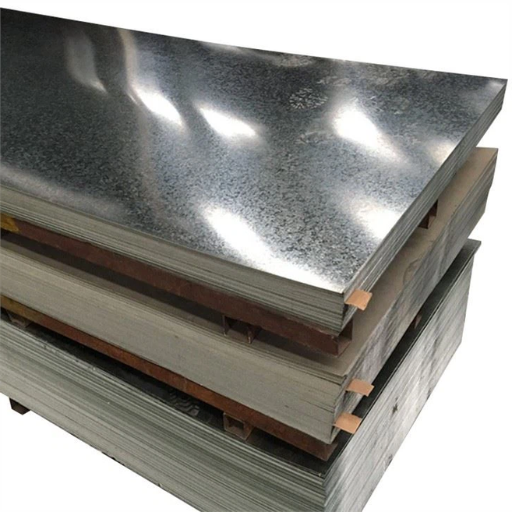
In comparison with similar materials, Q235 is classified as ASTM A36 in terms of its steel composition and mechanical properties. Both low-carbon steels can be employed for many structural activities owing to their versatile weldability and moderate strength. Nevertheless, Q235 possesses lower tensile strength than A36, which can affect material selection based on supporting structure requirements. Furthermore, Q235 is frequently cheaper, particularly in areas where it is plentiful, making it a favorable option for multi-purpose industrial expenditure.
Q235 Steel Equivalent: ASTM A36
Owing to their linear interchangeability, both Q235 and ASTM A36 can be employed interchangeably for structural activities without much attention to the chemical composition and strength variety. However, higher-yielding applications are best served with A36 due to its higher tensile strength. In contrast, Q235 has better economic use, especially in regions where it is the standard material, serving best on budget-constrained projects. I would recommend using Q235, where adequate performance is acceptable while having low strength costs.
Q235 vs SS400 and Other Equivalent Materials
Q235 and SS400 are categorized as mild steel grades with some interchangeable mechanical properties for general structural works. Throughout my research, I discovered that Q235 is primarily used in China, while SS400 is considered a common standard grade in Japan. The most significant distinction rests upon their respective regions of standards and certification. Generally, Q235 adheres to China’s GB standard, while SS400 conforms to the JIS standard. As far as performance is concerned, the two possess almost the same level of proficiency in tensile strength and elongation. Considering their comparable functionality, I would also opt for the material that meets the required local standard or is more accessible.
Differences Between Q235 and Other Steel Grades
I believe Q235 differs from other steel grades mainly due to its chemical makeup and physical characteristics. Take Q235’s weldability and strength, for instance; it is easier to weld than ASTM A36, a more common standard in the US, but its weldability and strength trade-off comes from its lower carbon percentage. Q235 generally has carbon, manganese, sulfur, and phosphorus in the following proportions: 0.12-0.20% carbon, 0.30-0.65% manganese, and 0.045% S and P in any combination. Even though A36 typically accepts the exact amounts, its peripherals seem more generous. Other physical characteristics also differ; for example, while Q235 has a tensile strength of 370-500 MPa and yield strength of not less than 235 MPa, A36 has no requirements for characteristically equal yield strength as 250 MPa. These features make Q235 preferable for some uses, such as when ease of fabrication is a significant factor, for example, in structural work within prefabricated buildings.
What Are the Characteristics and Advantages of Q235 Steel?
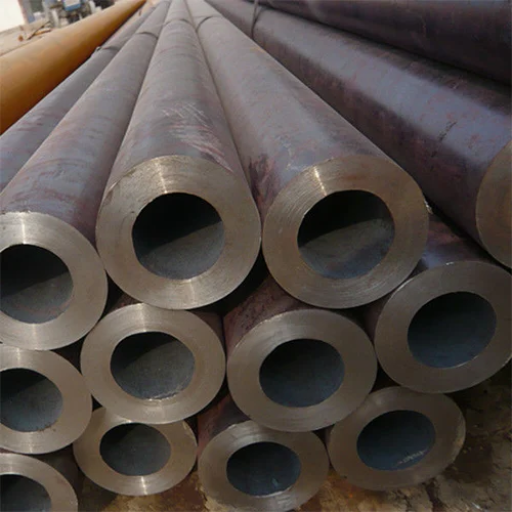
Q235 steel’s cost-effectiveness, ease of welding, and ductility make it popular in construction and structural applications. Its low carbon content provides suitable strength while making machining and welding easy, ensuring the effortless execution of myriad processes. Its high tensile strength and yield ensure heightened durability in applications involving load-bearing structures. Furthermore, its wide availability and low price make it the material of choice for projects where large volumes of steel are needed without compromising quality.
Weldability and Good Weldability Features
Q235 steel also has low carbon content, making it highly weldable. Lower chances of cracking while welding makes it all the easier to process it into the required shapes. This specific type of steel stands out due to its welding-friendly nature, making integrating strong connections in structural applications possible. This material passes gas welding, resistance welding, and arc welding with flying colors, making it perfect for numerous projects. The ability of Q235 steel to be welded so easily dramatically increases efficiency while reducing the complexity of tasks related to material fabrication.
Strength and Durability of Q235 Grade Steel
Because of its extensive variety of structural uses, Q235 grade steel is well-known for its balanced combination of strength and durability. A mixture of 235 MPa yield strength and 375 – 500 MPa tensile strength guarantees safety against heavy stress and deformation, ensuring that Q235 steel has excellent load-bearing capacity. Its break elongation of 20% shows good ductility, which means the material can absorb energy without fracturing. Furthermore, its toughness improves performance in different environmental conditions and enhances durability. Because of these broad characteristics, Q235 grade steel is a reliable and cost-effective choice for construction or manufacturing with high standards.
Corrosion Resistance of Q235 Steel
Because Q235 steel is mainly composed of carbon with little alloying material, it has some corrosion resistance. This kind of steel readily undergoes rusting for processes set in humid and/or corrosive environments without protective treatments. To prevent further oxidation, Q235 steel is treated with anti-corrosive paint or galvanized.
Q235 steel rusts faster in salt water and industrial regions with pollutants because these negative factors are environment-dependent. When kept in standard atmospheric conditions, untreated Q235 steel has a corrosion rate of about 0.1–0.3 millimeters per year. Proper galvanization significantly improves these rates since the zinc covering the steel helps prevent moisture and oxygen from coming into contact with it.
Q235 steel is strong in budget and durability, but measures protecting it from corrosion have to be employed to ensure the steel functions well in harsher conditions. This steel would fail to hold the desired qualities without the added treatment in marine and chemical industries, where corrosion is more aggressive.
How is Q235 Steel Processed and Treated?
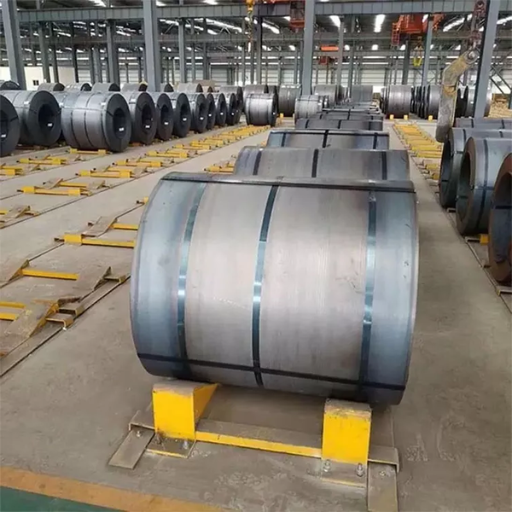
Q235 steel goes through multiple steps of treatment and processing to improve its mechanical properties and make it more usable for other applications. Processing usually begins with hot rolling, where the steel is formed at extremely high temperatures to meet a target shape and other desired properties like dimensions and physical characteristics. After this step, the steel can undergo annealing or normalizing treatments to enhance ductility and relieve some internal stresses while improving the grain structure. Treatments meant to enhance surface properties, such as galvanization or painting, are often done to oppose corrosion in areas highly susceptible to moisture or chemicals. In addition, machining steps like cutting, drilling, and welding are used to tailor the steel to specific industrial requirements. These processes ensure that Q235 steel performs to the required industry standards.
How to Make Q235 Steel
Production of Q235 steel starts with smelting iron ore and purifying it throughout refining. Upon purification, molten steel is blended with trace amounts of carbon, and the newly formed alloy is called Q235. The alloy is then shaped to the desired dimensions by hot rolling. To improve some properties like strength and corrosion resistance. The resulting steel might undergo supplementary treatments such as annealing or galvanization. Custom machining is done later to tailor the steel for specific uses. Such a process guarantees a steel product suitable for various industries.
Heat Treatment Methods for Q235 Steel
Heat treatment improves the performance and mechanical properties of Q235 steel. The most common types of heat treatment applied to Q235 steel are annealing, normalizing, tempering, and quenching.
- Annealing
In the annealing treatment, the Q235 steel is heated to about 720 °C to 760 °C for a specific time under this heating zone and then cooled down gradually in the furnace. This method enables a change in grain structure precipitation, increases ductility, and reduces internal stress, rendering the steel more machinable.
- Normalizing
Normalizing is accomplished by heating the steel above the critical temperature to around 880 °C to 920 °C and allowing it to cool in still air. This technique increases the uniformity, toughness, and strength of Q235 steel.
- Quenching
Quenching is characterized by the rapid cooling of the heated material, in this case between 850 °C and 900 °C. Quenching uses primarily water or oil as a coolant. This process increases the strength and hardness of Q235 steel but may make it brittle, which can be tempered afterward.
- Tempering
Steel must be tempered after quenching to manage brittleness and increase toughness. The steel is reheated above a certain temperature, introducing a range of 150°C to around 650°C, which is dependent on the favorable properties. After being strained, it is cooled down. Shifting to a colder tempering climate would result in less ductile, harder steel, and vice versa.
Specific to each application and mechanical properties desired for Q235 steel, each method was predetermined and achieved equilibrium in terms of extreme levels of toughness and strength along with the ease of machining.
Improving Toughness and Hardness in Q235 Steel
Focusing on the precise heat treatment processes of quenching and tempering would improve the toughness and hardness of Q235 steel most effectively. The fourteen to sixteen percent increase in hardness the steel undergoes during tempering requires proper management of the acquired brittleness. Care must be taken during the subsequent steps of reheating the steel to a range that balances the properties, like 200C to 400C for higher hardness or achieving improved ductility and toughness in the range of 500C to 650C. These parameters are widely known in engineering standards and will provide optimized mechanical performance of Q235 steel for different practical applications.
References
- Stavian Metal: Q235 Carbon Steel – Properties, Characteristics, and Applications
- Union YL: Q235 Steel Equivalent, Properties, Specification, and Composition
- Huaxiao Metal: What Is Q235 Steel?
Frequently Asked Questions (FAQ)
Q: What are the key characteristics of Q235 steel make it popular in construction?
A: Q235 steel is highly sought after in construction due to several distinctive characteristics. It offers an excellent balance of strength, ductility, and weldability. With a relatively low carbon content (0.12-0.20%), this steel material provides good plasticity while maintaining sufficient strength for structural applications. The characteristics of Q235 steel include good formability, high strength-to-weight ratio, and resistance to atmospheric corrosion. It can be quickly processed through various methods, including cutting, bending, and welding, making it versatile for different construction needs. Additionally, Q235 steel can withstand considerable loads while offering cost-effectiveness compared to higher-grade steels.
Q: What are the Q235 physical properties that engineers should be aware of?
A: The Q235 physical properties that engineers should know include a density of approximately 7.85 g/cm³, thermal conductivity of about 52 W/(m·K), and a melting point of around 1500°C. Its coefficient of thermal expansion is about 12 × 10^-6/K. Q235 steel typically has a modulus of elasticity of approximately 200 GPa. The “Q” in Q235 represents the material’s yield point, which is at least 235 MPa, while the tensile strength ranges from 370-500 MPa. These physical properties make Q235 steel suitable for various structural applications where moderate strength and good workability are required.
Q: Can you explain the Q235 mechanical properties in detail?
A: The Q235 mechanical properties in detail include yield strength of ≥235 MPa and tensile strength between 370-500 MPa. It has good elongation properties with an elongation percentage of ≥26% for thicknesses below 16mm, indicating excellent ductility. Impact resistance is moderate with Charpy V-notch energy absorption of ≥27J at room temperature. Q235 steel offers good fatigue resistance and can undergo plastic deformation before failure. The material exhibits sufficient hardness (approximately 120-160 HB) for structural applications while maintaining machinability. Different grades of steel in the Q235 family (A, B, C, and D) have varying mechanical properties, with Q235A having the lowest requirements for impact toughness and Q235D having the highest, making grade selection important for specific applications.
Q: What are the common uses of Q235 steel in industrial applications?
A: Q235 steel is widely used across various industrial sectors due to its excellent mechanical properties and cost-effectiveness. Typical applications include structural components in buildings (beams, columns, and trusses), railway tracks, bridges, and towers. It’s used for manufacturing equipment frames, machinery parts, and storage tanks. The automotive industry utilizes Q235 for vehicle chassis components and various supporting structures. It’s also prevalent in producing steel plates, pipes, and sections for construction. Q235 steel may be found in shipbuilding, container manufacturing, and agricultural equipment. Its good weldability makes it particularly valuable for fabricated structures requiring multiple components to be joined securely.
Q: What materials are equivalent to Q235 steel by different international standards?
A: Materials equivalent to Q235 steel can be found across various international standards. In European standard EN 10025, the closest equivalents are S235JR, S235J0, and S235J2. The American standard ASTM A36 steel is often considered comparable, though A36 has slightly higher carbon content. In the Japanese standard steel classification, SS400 is equivalent to Q235. The German standard DIN 17100 lists St37-2 as an equivalent, while the British standard BS 4360 offers Grade 40B/43A as comparable materials. Russian GOST standard identifies St3sp and St3ps as equivalents. When selecting equivalent materials, engineers should verify specific properties as slight variations in composition may exist between standards, potentially affecting performance in particular applications.
Q: How do the different grades of Q235 steel compare in terms of properties?
A: Q235 steel comes in four primary grades: A, B, C, and D, each with different properties suited for various applications. Q235A is the basic grade with minimal requirements for impact toughness and is used in general applications. Q235B improves impact resistance and is the most commonly used grade for general structural purposes. Q235C offers better impact toughness, especially at lower temperatures, making it suitable for more demanding structural applications. Q235D provides the highest impact resistance in the series, particularly at sub-zero temperatures, making it ideal for cold-region construction. As the grade progresses from A to D, the quality control on harmful elements like phosphorus and sulfur becomes stricter, and the impact toughness requirements increase. However, the yield point remains constant at 235 MPa across all grades.
Q: How does Q235 steel perform in welding applications?
A: Q235 steel demonstrates excellent performance in welding applications due to its low carbon content (typically 0.12-0.20%). This characteristic makes it less susceptible to hardening and cracking in the heat-affected zone during the weld process. Q235 can be welded using all standard methods, including shielded metal arc welding (SMAW), gas metal arc welding (GMAW), and submerged arc welding (SAW). Preheating is generally not required for thinner sections, though it may be recommended for thicker plates to prevent thermal stresses. Post-weld heat treatment is typically unnecessary unless the application has specific requirements. The material’s good plasticity ensures minimal distortion during welding. When selecting filler materials, those with compatible mechanical properties to ensure the weld joint maintains similar strength to the base metal are recommended.
Q: How do Q235 steel plates compare to higher-grade steel plates regarding mechanical properties?
A: Q235 grade steel plate has lower mechanical properties than higher-grade steels like Q345, Q390, or Q420. The yield strength of Q235 (235 MPa) is considerably lower than that of Q345 (345 MPa) or higher grades. Similarly, its tensile strength range of 370-500 MPa is below that of premium steels. However, Q235 offers better ductility and formability than many higher-grade alternatives, making it easier to process and fabricate. While higher-grade steels provide greater load-bearing capacity, Q235 delivers sufficient strength for many applications at a more economical price. This makes it an ideal choice for structures without extreme strength requirements. The carbon content in Q235 is also typically lower than in higher-grade steels, contributing to its superior weldability but reduced hardness.
Q: How can I contact us for more information about Q235 steel specifications and availability?
A: To contact us for detailed information about Q235 steel specifications, pricing, and availability, please visit our official website and navigate to the “Contact Us” page. You’ll find a contact form where you can submit your inquiry regarding Q235 steel or any equivalent materials. Alternatively, you can contact our technical support team directly at our customer service number during business hours. For immediate assistance, our live chat feature on the website connects you with our steel experts, who can answer questions about the characteristics of Q235 steel, appropriate applications, or help with material selection. Our regional sales offices are also available for in-person consultations regarding bulk orders, custom specifications, or specialized applications of Q235 steel.

